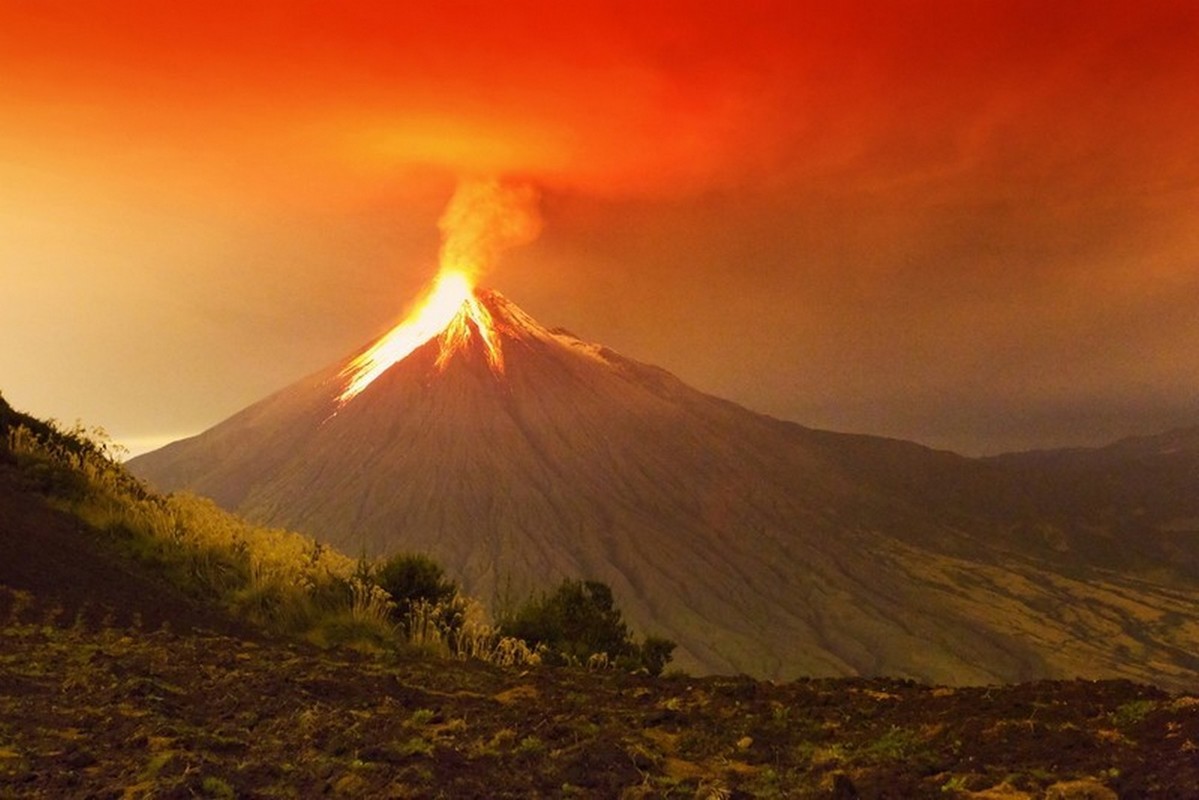6.5 Plate tectonics
 Tectonic plates can move in different directions relative to each other. Study the pictures on the right. The picture on the top shows how plates diverge from each other at a mid-ocean range. The picture in the middle shows plates moving sideways. In the picture on the bottom, two plates are shown colliding against each other.
Tectonic plates can move in different directions relative to each other. Study the pictures on the right. The picture on the top shows how plates diverge from each other at a mid-ocean range. The picture in the middle shows plates moving sideways. In the picture on the bottom, two plates are shown colliding against each other. In the Mid-Atlantic range, the Eurasian and North American plates diverge from each other at a speed of a few centimeters per year. When litospheric plates diverge, new plate mass is created. This happens when molten magma that erupts from between the oceanic plates solidifies. Sometimes, the solidified lava can grow as high as the ocean's surface, creating a new island. Iceland, for example, is a result of such a process.
Lithospheric plates can also move sideways past each other, while at the same time rubbing against each other. The San Andreas fault in California is a good example of this kind of tectonic movement. The fault is some 1 300 kilometers long. At the location of the fault, two lithospheric plates move in different directions, causing powerful earthquakes.
When lithospheric plates collide with each other, volcanoes and mountain ranges are formed. As the plates move against each other, earthquakes can also be noticed. One such collision zone runs through the Mediterranean, as the African Plate moves towards Europe. This collision zone has resulted in various mountain ranges, such as the Alps, the Balkans, the Carpacian mountains, and the Apennines. The collision zone also includes a number of active volcanoes, such as Etna, Stromboli and Vesuvius.

A volcano in Ecuador. It has formed as a result of two tectonic plates colliding with each other. Molten magma is erupted to the surface of the Earth.